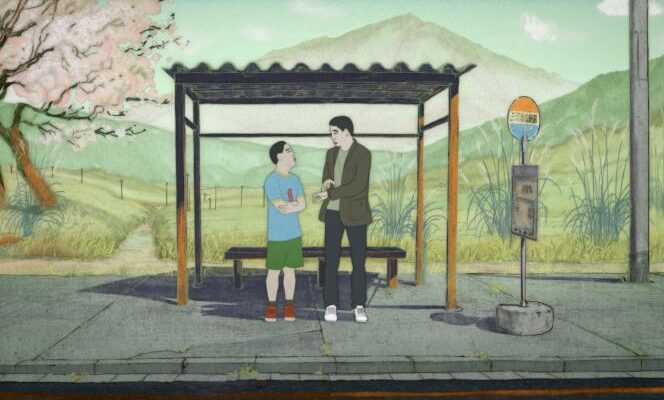THE OPINION OF THE “WORLD” – TO SEE
Western animation has not ceased, for some time, to look towards Japan, in fact establishing a fertile dialogue between graphic schools. After The Summit of the Gods (2021), by Patrick Imbert, who brought a manga by Jiro Taniguchi to the screen, the first feature film by Pierre Földes, a multidisciplinary artist, weaves together a fine selection of six short stories by Haruki Murakami, labile matter animation enclosing as closely as possible the floating surrealism of the famous Kyoto writer, in a more resolutely adult register.
In the aftermath of the Fukushima accident, in those days of astonishment in March 2011, in Tokyo, a couple fell apart. Komura, a bank employee, watches helplessly as his wife, Kyoko, leaves after she has curled up for days in front of the television screen and the broadcast images of the disaster. Taking advantage of a leave, the man leaves for the Hokkaido region, in the north of the archipelago, to deliver in person a mysterious box that a colleague entrusted to him.
During this time, his colleague Katarigi, a bullied subordinate in charge of a perilous recovery file, makes, in the evening, in his apartments, the meeting of a fantastic creature, a human-sized frog named “Frog”. In order, she says, to prevent a future earthquake, she urges her to fight against a giant worm lodged in the bowels of the city.
Intimate aftermath of the Fukushima disaster
The wanderings of these three characters intertwine loosely. Through this story all back and forth, digressions and fantasies, progressing by stasis and puffs, the film retains by its mixture of spleenetic realism and dreamlike ornamentations. Realism in the animation of the characters, based on real shots, without Földes trying to westernize them. Their environment, on the other hand, is tinged with expressionism: a reality inhabited by spectral lines, slippery shadows, supernatural glimmers.
The alternate presence of totemic animals – an escaped blue cat, a humanoid frog, a fish floating in the air – affixes the mark of fantasy to the mists of an evanescent everyday life. This painting of the intimate repercussions of the catastrophe unfolds in halftones, in broken tones, all in sharps, flats and suspensions. Pierre Földes, son of a great Hungarian name in animation, Peter Foldès (1924-1977), relies on the non-spectacular resources of the genre: a web of fluctuating and nebulous sensations destined to make one feel an abyss, an inner lack, an absence from oneself. It is in this bet on the interstices that the film finds its most undulating beauty, in slow decoction.
You have 3.21% of this article left to read. The following is for subscribers only.
